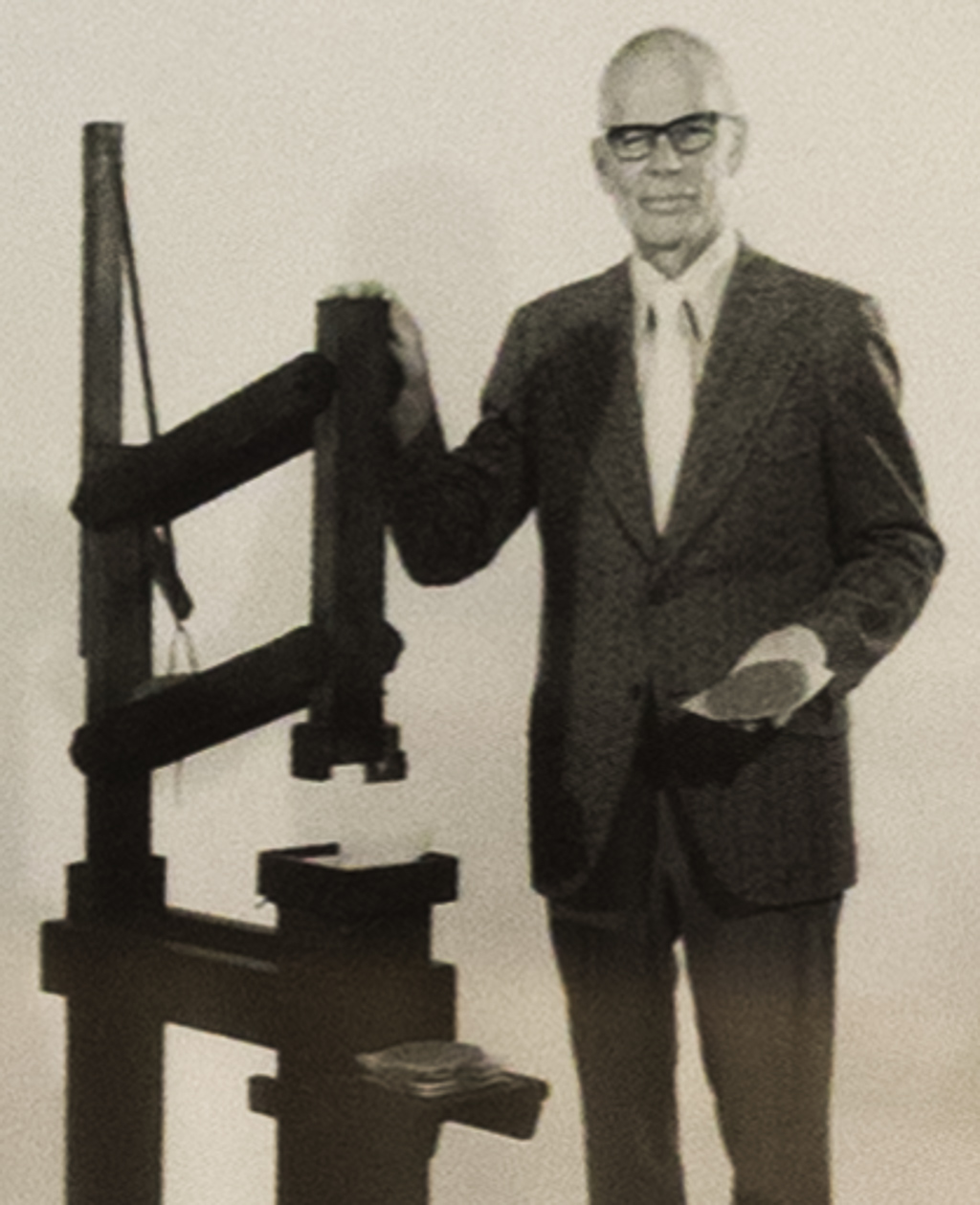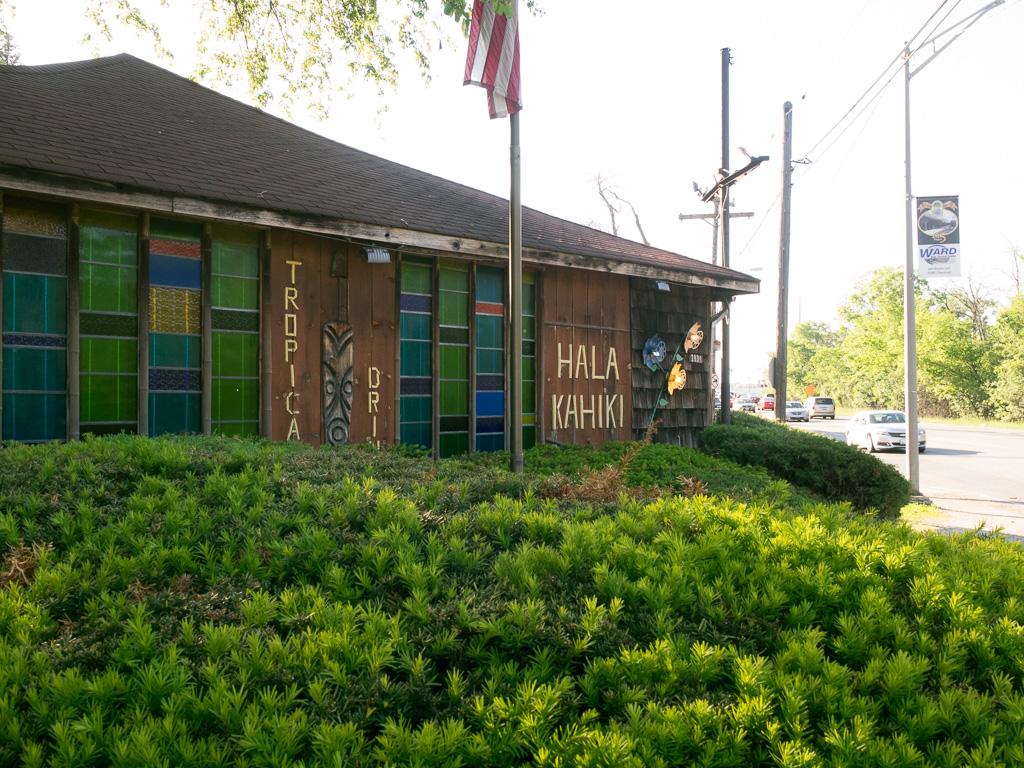Businessmen like Ray Kroc and Dave Thomas have secured their places in the annals of the fast food industry. But what about Harry Holly? He invented the hamburger patty molding machine in the kitchen of the burger restaurant he opened after losing his job in the Depression. Holly’s patty press helped bring the modern fast food industry into existence by equipping McDonald’s and Burger King with machines that could efficiently produce standard-sized burgers.

But 77 years after Holly founded his patty machine company, Hollymatic, neither inventor nor business has name recognition outside of the meat processing industry. That’s just the kind of story we like to tell at The Distance, which we launched in May to highlight businesses that have endured over decades.
In the case of Hollymatic, the company survived the loss of its major fast food customers as well as internal turmoil that booted Holly from leadership. The messiness in Hollymatic’s long history makes the company’s second wind under new ownership all the more satisfying. They are true business survivors and we hope you’ll check out their story. Thanks for reading!
I first noticed the Hala Kahiki about a year ago driving north on River Road through the Chicago suburb of River Grove. I glanced at its colorful exterior and quirky signage and wondered, “What’s the story there?” The wonderful thing about journalism is that it’s a professional excuse to be nosy. I contacted the bar owner, Jim Oppedisano, et voilà! Our newest story for The Distance takes you inside the Hala Kahiki, a tiki bar established nearly 50 years ago by a family that’s never traveled west of California.
One of the many fascinating things about the Hala Kahiki is that its founders, Stanley and Rose Sacharski, weren’t trying to take advantage of the mid-century tiki fad. They just wanted to run a bar, and the tropical theme came about largely by chance. I love the role that serendipity plays in the history of the Hala Kahiki, which like many businesses has benefitted from a combination of happy accidents and pragmatic management.
 Photo by Michael Berger
Photo by Michael Berger
The bar is well-known among tiki enthusiasts and certain locals; earlier this year, Time Out Chicago listed “a pilgrimage to Hala Kahiki in River Grove” as No. 9 on its list of Chicago Rites of Passage. The Hala Kahiki is one of the last old-fashioned tiki bars in the region, and it’s delightfully nostalgic and free of irony. This is not a place for craft cocktails and winking nods to a bygone era of American kitsch. This is a place where you drink something called a Sweet Leilani on a leopard print stool while the bartender tells you ghost stories. There’s even a gift shop in the back where I almost bought a vintage Hawaiian muumuu at least three sizes too big for me.
We’re always on the hunt for unique businesses like the Hala Kahiki to write about for The Distance, so keep sending your suggestions to [email protected] or follow us on Twitter at @distancemag. If you’re new to The Distance, please check out our first two stories on Horween Leather Co., Chicago’s last tannery, and Tina’s Closet, a lingerie store in the Chicago suburbs whose owner is determined to get every woman into a well-fitting bra.
Let’s take a break from the business news cycle. I love the news and I’ve covered it for a decade: what new startup is launching, why a stock price just moved, who’s being hired or fired. But there’s a whole universe of fascinating stories waiting to be covered about what’s old in business.
That’s why we’re launching The Distance, a new online magazine featuring original journalism about bootstrapped businesses that are at least 25 years old. If you’ve ever been curious about your favorite family-owned restaurant or that little shop on the corner, this is the publication for you. These businesses might not make headlines, but their owners have compelling stories about how they started, what they’ve learned, and why they keep doing it.
This is a heady time for people interested in great stories, whether it’s telling them or reading them. From newer sites like Vox and FiveThirtyEight and Narrative.ly to legacy media outlets that keep producing indispensable work (I still subscribe to two print newspapers), today’s readers have a lot of choices competing for their limited time. The Distance offers its own kind of storytelling – enjoyable reads about long-lasting businesses and the people behind them.
We’ll be publishing one story a month starting in May. We hope you find the companies of The Distance as interesting as we do and come back each month for more. (And while Basecamp is sponsoring the magazine, The Distance is editorially independent and we will not write about Basecamp customers.)
We’d also love to hear from you. If you know of any companies that would make good profile subjects, please let me know!


